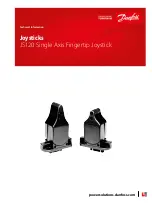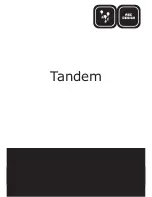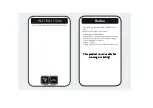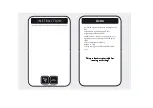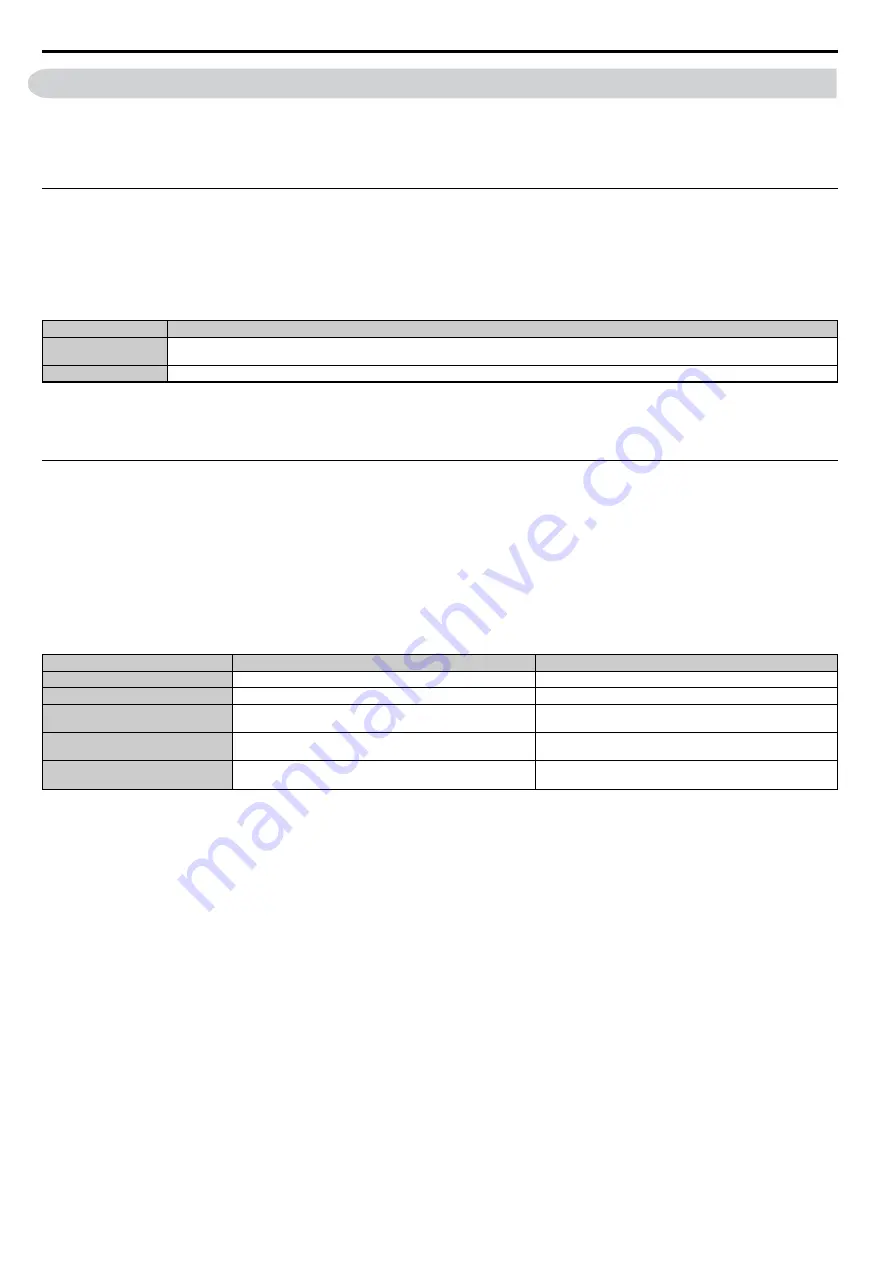
470
YASKAWA ELECTRIC SIEP C710616 30B YASKAWA AC Drive T1000A Technical Manual
C.10 Enter Command
C.10 Enter Command
When writing parameters to the drive from the PLC using MEMOBUS/Modbus communication, parameter H5-11
determines if an Enter command must be issued to enable these parameters or not. This sections the types of Enter
commands and how they work.
u
Enter Command Types
The drive supports two types of Enter commands as shown in the table below. An Enter command is enabled by writing
0 to register number 0900H or 0910H. These registers can only be written to. An error will occur if the user attempts to
read from these registers.
Table C.6 Enter Command Types
Note:
Because the EEPROM can be written to a maximum of 100,000 times, refrain from writing to the EEPROM too often. The Enter
command registers are write-only. Consequently, if these registers are read, then the register address will be invalid (Error code:
02H). An Enter command is not required if reference or broadcast data are sent to the drive.
u
Enter Command Settings when Upgrading the Drive
When replacing earlier Yaskawa drive models with the T1000A and keeping the MEMOBUS/Modbus communications
settings, parameter H5-11 needs to be set in accordance with how the Enter command was set up in the older drive. H5-
11 determines if an Enter command is needed or not in order to activate parameter changes in the drive.
• If upgrading from a G7 or F7 series drive to an T1000A, set parameter H5-11 to 0.
• If upgrading from a V7 series drive to an T1000A, set parameter H5-11 to 1.
n
H5-11 and the Enter Command
Register No.
Description
0900H
Writes data into the EEPROM (non-volatile memory) of the drive and enables the data in RAM at the same time. Parameter changes remain even if the power
supply is cycled.
0910H
Writes data in the RAM only. Parameter changes are lost when the drive is shut off.
H5-11 Settings
H5-11 = 0
H5-11 = 1
Drive being replaced
G7, F7
V7
How parameter settings are enabled
When the Enter command is received from the master.
As soon as the value is changed.
Upper/lower limit check
Upper/lower limit check is performed, taking the settings of related
parameters into account.
Checks only the upper/lower limits of the parameters that were
changed.
Default value of related parameters
Not affected. The settings of related parameters remain unchanged.
They must be changed manually if needed.
Default settings of related parameters are changed automatically.
Error handling when setting multiple
parameters
Data is accepted even if one setting is invalid. The invalid setting will
be discarded. No error message occurs.
Error occurs if only one setting is invalid. All data that was sent are
discarded.


































